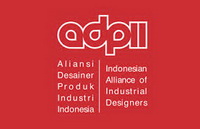Pengaplikasian modul ‘ATUMICS’ pada bidang desain industri furnitur rotan
Abstract
Keywords
Full Text:
PDFReferences
Keinonen, T., Koivunen, M. R., Nieminen, M., Riihiaho, S., & Säde, S. (1998). Smart products, a multi-disciplinary design issue. In Smart products. Publication Series F3 University of Art and Design Helsinki UIAH, Helsinki, 14-16.
Nugraha, A. (2005, September). Transforming tradition for sustainability. In Joining Forces, International Conference on Design Research (pp. 22-24).
Nugraha, A. (2006). New Utensil from Tradition, in Itkonen, M et al (Eds) The Culture of Food: The Dialectic of Material Conditions, Art, and Leisure, Jyväskylä University Printing House. 175-192.
Nugraha, A. (2009). Asian Ways of Creativity: Keeping Tradition Alive? Asia Design Journal, 4 (4) 190-215.
Nugraha, A. (2012) Transforming Tradition: A Method for Maintaining Tradition in a Craft and Design Context, Helsinki, Aalto University Publication.
Nugraha, A. (2018) Transforming Tradition in Indonesia. In Walker, S., Evans, M., Cassidy, T., Jung, J., Twigger Holroyd, A. (Eds.) Design Roots: Culturally Significant Designs, Products, and Practices, London, Bloomsbury Publication, pp. 147-161
Papanek, V. (1995). The Green Imperative, Ecology and Ethics in Design and Architecture. Thames and Hudson Ltd.
Septian, M. D., & Leksono, A. B. (2020). Pengembangan Inovasi Produk UMKM Berbasis Kulit Menggunakan Metode Model Transforming Tradition ATUMICS (Studi Kasus: Javalore). Gorga: Jurnal Seni Rupa, 9(1), 07-14.
Turang, W. C., & Turang, D. A. O. (2021). Pengembangan desain tas wanita berbahan rumput Purun menggunakan metode ATUMICS. Productum: Jurnal Desain Produk (Pengetahuan dan Perancangan Produk), 4(1), 33-42.
Williams, A.R. (2007). A World Loses Its Tounges. National Geographic Magazine, October 2007, 212(4) 26
DOI: https://doi.org/10.24821/productum.v5i1.4297
Refbacks
- There are currently no refbacks.
p-ISSN 2477-7900 | e-ISSN 2579-7328

This work is licensed under a Creative Commons Attribution 4.0 International License.
Like & Follow Us











